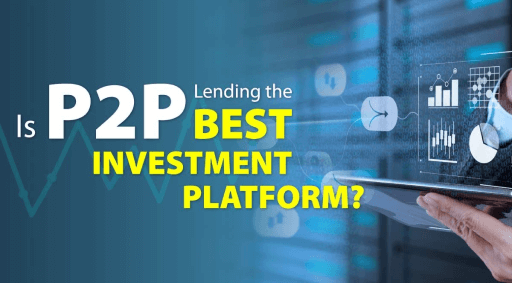

Peer-to-peer (P2P) lending emerged in the early 2000s as a type of lending service that directly connects investors with small businesses or individuals. It is a popular alternative to traditional lending options for many investors because it frequently produces above-market returns. However, there are risks associated with P2P lending, and here’s what you should know.
What is P2P lending?
P2P lending is a type of financing in which borrowers or small businesses can obtain unsecured loans from investors without going through a middleman or traditional financial institution. It is also known as social lending or crowdlending.
Individual investors use a P2P lending platform to fund full or partial loans with an expected return on investment. The platform predetermines the loan terms and interest rates. These rates are typically more advantageous for the investor and the borrower than traditional lending.
People who need money but do not qualify for traditional bank loans frequently turn to a P2P lending site. The platform will handle everything from loan underwriting to the distribution of funds and collection of payments. This simplifies the lending and borrowing process for all parties involved.
To determine loan terms and rates, P2P lenders frequently consider factors such as the borrower’s income, debt-to-income ratio, credit score, and credit history. P2P platforms offer investors a great way to diversify their portfolio while potentially earning a higher return than other high-yield investments.
What qualities should you be looking at?
Since its inception, many P2P lending sites have sprung up to provide an alternative method of financing. However, with so many websites available, it has become increasingly difficult to sort through the noise and find the best platform to invest in.
When selecting a P2P lending platform, keep the following factors in mind:
(a) Minimum and maximum loan amounts: Many platforms have a fixed minimum loan amount and they may also impose a loan cap, limiting the investor’s earning potential.
(b) Full or partial investment: Some platforms allow investors to fund partial loans, whereas others require investors to fund the entire amount.
(c) Borrower qualifications: Some platforms have few requirements for borrowers, making them riskier to invest in. The most effective platforms take into account their borrowers’ credit score, financial history, income, and other qualifications.
(d) Interest rates: Annual percentage rate (APR) can range from 6% to 35%.
(e) Loan terms: Most loans are two to five years in length and can be repaid in weekly or monthly instalments.
(f) Fees: Some platforms charge their investors a fee (usually by percentage) or a prepayment penalty may apply in some cases.
(g) Return on Investment (ROI): The ROI varies based on each platform but the average is between 7% to 11%.
(h) Investor qualifications: In some cases, an accredited investor is required as they must earn a certain amount of money before they can provide lending.







